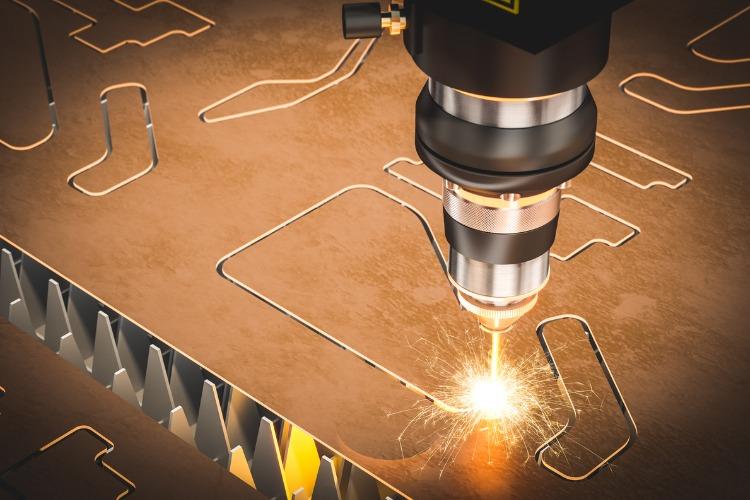DXF and SVG files for plasma cutting
In modern metal fabrication, DXF, SVG files for plasma cutting are essential tools for ensuring precision and efficiency. These vector-based file formats are used to communicate design instructions to CNC plasma machines.
- DXF Files: DXF (Drawing Exchange Format) files are widely used in computer-aided design (CAD) software to store 2D and 3D design data. They are compatible with most CNC plasma machines and contain detailed information about the dimensions, shapes and patterns to be cut. The advantage of DXF files is their flexibility. Designers can easily edit and adjust them before the cutting process begins, ensuring high accuracy. DXF files also allow users to scale designs to different sizes without losing detail.
- SVG files: SVG (Scalable Vector Graphics) files are another popular format for plasma cutting. These files store designs as vectors, which are ideal for intricate and decorative patterns. Often used by artists and small fabrication shops to create metal artwork and signage, a key advantage of SVG files is their scalability. They can be resized without compromising quality, which is essential for plasma cutting where precision is critical.
Workflow for using DXF and SVG files for plasma cutting
The integration of DXF, SVG files for plasma cutting follows a specific workflow to ensure smooth operation:
- Design Creation: Designers use CAD software to create cutting patterns and save them as DXF or SVG files. Software such as AutoCAD, SolidWorks, or Inkscape are commonly used for this purpose.
- File Preparation: Once the design is complete, it must be optimized for plasma cutting. This includes setting appropriate line thicknesses, defining cutting paths, and ensuring that there are no overlapping lines that could interfere with the cutting process.
- Machine Setup: The DXF or SVG file is imported into the CNC plasma machine's software. Operators configure cutting parameters such as speed, gas flow and torch height based on the type and thickness of the metal.
- Execution: The CNC machine follows the design instructions in the DXF or SVG file and cuts the metal with high precision. Because plasma cutting is automated, the chance of human error is minimized.
Advantages of using DXF and SVG files for plasma cutting
Using DXF and SVG files for plasma cutting offers several benefits, especially for industries where precision and efficiency are essential:
- Accuracy: CNC plasma machines rely on DXF and SVG files to make precise cuts, ensuring minimal material waste.
- Customization: Designs can be easily modified in DXF or SVG formats to meet specific project requirements.
- Automation: DXF and SVG files facilitate the automation of cutting processes, reducing production time and labor costs.
- Consistency: Once a design is finalized, it can be replicated as many times as needed without compromising quality.
Plasma cutting challenges and solutions
Despite its many benefits, plasma cutting does present some challenges:
- Edge quality: Plasma cutting can sometimes leave rough edges or dross (residual metal) on thicker materials. This can be mitigated by optimizing cutting parameters or performing post-processing steps such as grinding.
- Metal thickness limitations: While plasma cutters are effective on thinner metals, extremely thick materials may require other cutting methods.
- High operating costs: Consumables such as electrodes and nozzles must be replaced regularly. However, advances in technology have made plasma cutters more efficient, extending the life of consumables.
The future of plasma cutting
The future of plasma cutting is bright with advances in automation and software integration. CNC plasma cutters are becoming more user-friendly with improved touchscreen interfaces and expanded connectivity options. In addition, the integration of artificial intelligence and IoT technologies is enabling predictive maintenance and real-time monitoring of plasma cutting processes.
In addition, as the demand for sustainable manufacturing practices increases, plasma cutting systems are being designed to be more energy efficient, minimizing their impact on the environment.
Conclusion
Plasma cutting technology has revolutionized the metal fabrication industry by providing a fast, accurate and versatile method for cutting various metals. The integration of DXF, SVG files for plasma cutting further enhances the efficiency and accuracy of the process, allowing industries to achieve consistent results with minimal waste.
As plasma cutting and CNC automation continue to evolve, the technology will remain a cornerstone of modern manufacturing, construction and artistic design. By harnessing the power of DXF and SVG files, professionals can streamline their workflows and create complex designs with ease, ensuring that plasma cutting remains at the forefront of innovation in metal fabrication.

